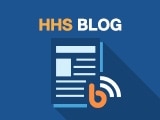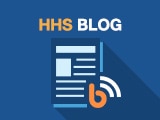The Intersection of Hurricane Response and Opioid Use Disorder
Hurricane season is just around the corner. If you are thinking about ways to prepare for the next hurricane, take a moment to consider this: approximately 2.1 million people have an opioid use disorder according to the National Survey on Drug Use and Health and over 47,000 of them died by overdose in 2017 according to a study by the Centers for Disease Control and Prevention. After a hurricane, flood or other disaster, responders, emergency healthcare professionals, and disaster relief service providers face the challenge of considering the specific vulnerabilities of people struggling to manage treatment and recovery while meeting the increased needs of the community at large.
People in substance use recovery rely on healthcare systems and substance use and mental health treatment and recovery services that are frequently disrupted in a hurricane. When access to medication-assisted treatment, including methadone, buprenorphine and naltrexone, is compromised, patients suffering from an opioid use disorder face potential health complications, such as the onset of rapid withdrawal symptoms and relapse.
If access to medication assisted treatment is restricted, individuals may seek out illicit opioids, such as heroin, to avoid experiencing withdrawal. The stress of managing the aftermath of a hurricane, flood or other disaster may result in more people with opioid use disorder reverting to illicit drug use to soothe their anxiety and distress, causing more instances of overdose and the necessity for rapid emergency medical treatment in shelters or in the community.
Here are five things you can do before a disaster strikes to prepare to help people who are suffering from opioid use disorder:
- Learn to Recognize and Respond to Opioid Withdrawal: When people abruptly stop using medication-assisted treatment, their bodies may enter withdrawal. The symptoms of opioid withdrawal can include anxiety, restlessness, perspiration, chills, fever, muscle pain, watery eyes, a runny nose, restless sleep, yawning, tremors, irritability, “goose bumps” (piloerection), severe nausea, vomiting, cramps, and diarrhea. These symptoms can last for several days and can be severe. To cope with the effects of withdrawal, individuals may seek medical attention from emergency providers. Be ready to help people who are suffering from withdrawal or connect them with medical professionals who can provide them with the care they need.
- Identify Drug Treatment Services and Health Centers in Your Area: Before a disaster strikes, familiarize yourself with the location and services of local drug treatment facilities and health centers, including those that provide medication assisted treatment. Most have plans in place to provide take home medications and supplies in advance of a hurricane or severe storm or agreements with one another to provide services if necessary. Find out what those plans are in advance of a storm so you understand how people in recovery can maintain their treatment. To get started, use SAMHSA’s Behavioral Health Treatment Locator. You can also work with agencies that address substance abuse in your state as you develop your plan. HRSA-funded community health centers may provide additional resources. To find out about low- or no-cost HRSA-funded community health centers services in your area, use the HRSA health center locator.
- Provide Space and Privacy: Disaster relief service providers can facilitate ongoing access to support strategies by ensuring shelters and disaster recovery centers have space set aside to enable 12-step meetings or private consultations with substance abuse and mental health volunteers and workers.
- Tell People about SAMHSA’s National Helpline: Have materials on hand to refer people to treatment and support, such as SAMHSA’s National Helpline. The helpline is a free, confidential, and available 24/7 (in English and Spanish) for individuals and families facing mental and/or substance use disorders. You can reach SAMHSA’s National Helpline at 1-800-662-HELP (4357) or use TTY at 1-800-487-4889.
- Have a Plan to Help People following an Overdose: If you work or volunteer in disaster evacuation shelters, learn to recognize the signs of an opioid overdose and have a plan in place to help them. People who have overdosed on opioids may be unconscious or unable to wake up; have very small pupils; have slow, shallow, or difficulty breathing; have difficulty breathing; and/or have fingernails or lips that are turning blue or purple. If someone in your shelter is experiencing an opioid overdose, be ready to help. Naloxone, a non-addictive, life-saving drug, can be used to reverse an overdose and treat patients or staff members who have been exposed to opioids, but you need to have staff who are trained to administer it and you need to be ready to administer it quickly. The drug works by binding to opioid receptors in your body and reversing or blocking the effects of opioids. To learn more, check out SAMHSA’s Opioid Overdose Prevention Toolkit.
Responding to a hurricane while ensuring that you meet the needs of all members of your community, including those with opioid use disorder, is complex and challenging. By using these five strategies to enhance your disaster response plan, you and the members of your community will be better prepared to help individuals with opioid use disorders withstand the challenges of a natural disaster while helping their recovery efforts thrive.
All re-posted from: ASPR Blog
Patient-Centered Care Is Key to Best Practices in Pain Management
A Time for Second Chances


